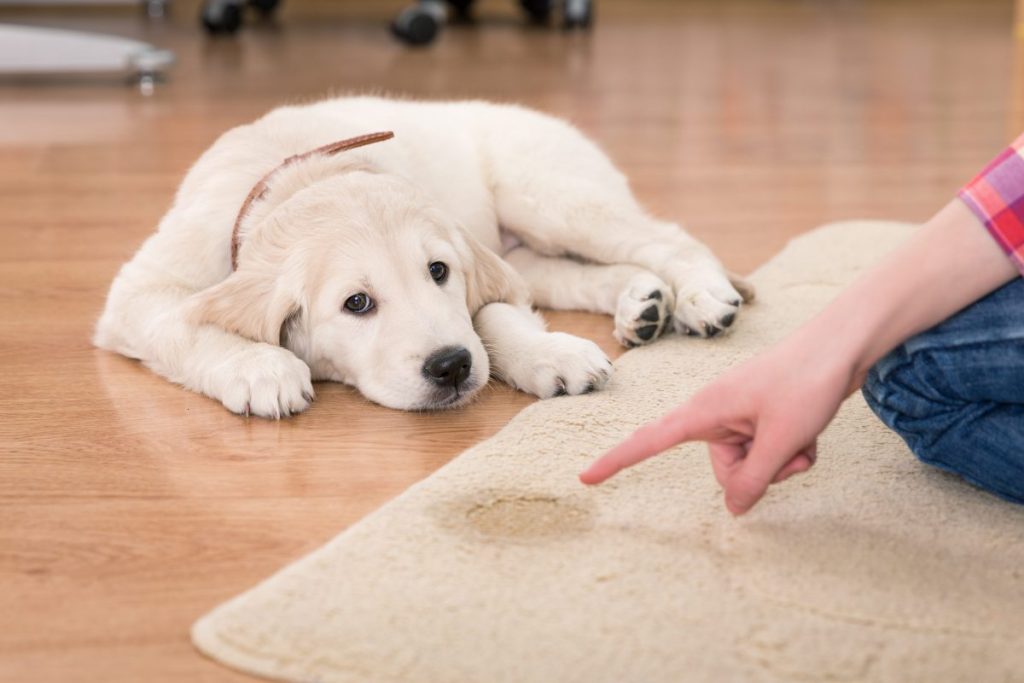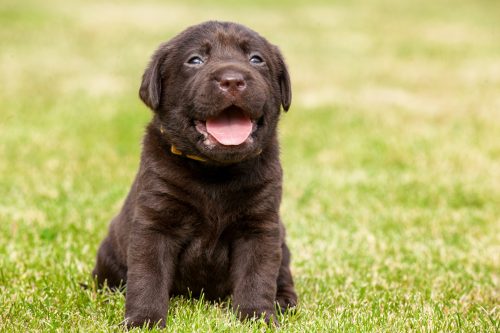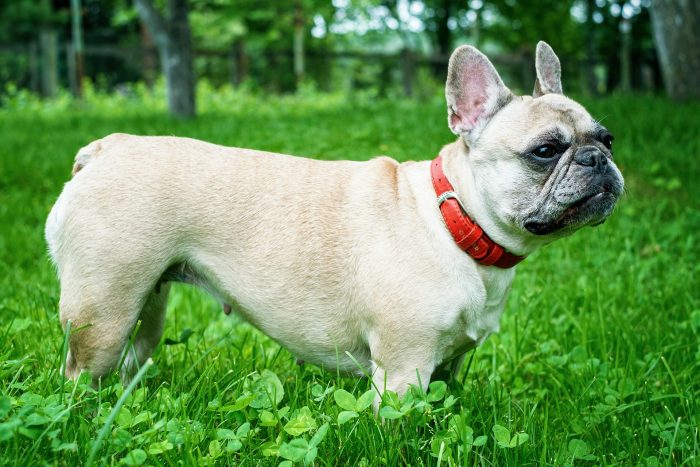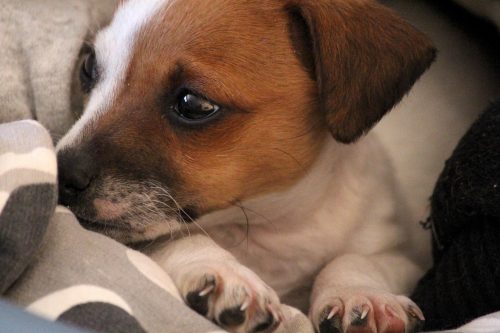House training a puppy can be a test of patience. You will need to be consistent, patient, and remember to reward your pup diligently whenever he succeeds in going potty outside. House training is all about creating good habits, and preventing bad ones.
How Long Does It Take to Potty Train Your Dog?
Potty training dogs can take time. It can take anywhere from 4 to 6 months for your pup to be fully house trained. Some dogs can even take up to a year. Small dogs tend to be more difficult and take longer to train because they have smaller bladders and higher metabolisms, which means your pup will need more trips outside.
In some cases, an adult dog may have already learned bad habits from a previous owner. This means that you will have to break those bad habits and retrain your pup.
Just keep in mind that even when your pup has an accident, it’s only a minor setback. Stay consistent with your training program, and your dog will eventually get it. Sadly, proper house training (or lack thereof) is one of the most common reasons dogs wind up in animal shelters. There aren’t many people who have the patience to clean up messes every day.
It’s important to carefully evaluate whether you are ready own a dog at all, because if you aren’t ready to make the commitment and time investment required, you should not become a pet owner just yet.
When to Begin Potty Training Your Dog
The earlier you can begin house training your pooch the better. The usual recommendation is between 12 and 16 weeks old. That’s around the age your pup possesses enough control of his faculties that he can learn to hold it and wait.
If you get a pup that is older than 12 weeks, and he hasn’t already been properly trained, it will be tougher to potty train him. It will be necessary to break his current bad habits, and retrain him with the new positive habits you want him to adopt.
Tips for House Training Your Dog
One key to successful potty training is keeping your pup in a confined space. Whether that is in a room, in a crate, or attached to a leash in your home, that is up to you. As your pup learns to go potty outside, you can slowly increase his freedom so that he is eventually able to roam the entire house.
Crate Training
Crate training is a great method for potty training your pup and is one of the more popular ways of doing so. It is a preferred method by many because it keeps your house clean during the training process, and it’s convenient.
When your dog is crated, you can rest easy while keeping an eye on your pooch for signs he needs to go out. When you see the signs, be sure to let him out right away and take him to his designated spot. Some owners don’t like the idea of crating a dog, but crates truly do make life easier for many pet owners.
Not only can crate training help potty train your dog, but it is important for your dog to be accustomed to a crate for travel purposes. Should your dog need to go to the vet, travel, or need to be confined for any other reason, your dog will be comfortable with the crate and remain happy.
Keep in mind that dogs are pack animals and like to have a ‘den’ to sleep in. Whether you give your pup a crate or you don’t, he will still find that one special ‘spot’ he can call home.
The premise behind crate training is that for the most part, dogs tend to be clean and don’t like to sit or lie in pee. That’s why it’s important to choose the right sized crate for your pup. If you give your dog too much room to move around, he will use a corner to eliminate, and then happily fall asleep in the other corner, far removed from his mess.
Crate training is not the same as training your dog to go to the bathroom outside, so ideally the crate should be just big enough for your dog to stand up, lie down, and turn around in. If your dog learns that it’s okay to go potty on his bed, your dog will begin to feel it’s okay to go anywhere else in the house too.
Observe your dog carefully when he is crated for signs he needs to use the potty. Whining and scratching is a good indicator that you need to let your pup out right away. When you do, lead your dog straight to the spot you want him to eliminate.
Paper Training and Puppy Pads
Paper training can be confusing for a dog, because you are giving him more than one option when it comes to going potty. The goal is to get your pup to control his urges while he is inside and only go when he is taken outside. Sometimes that isn’t always a possibility, especially if you have a job and work long hours, or weather conditions make going outside impossible.
In cases like this, putting down paper or pee pads gives your dog a spot to go in your home where he believes it’s allowed. As your dog gets older, you can continue to work with him so that he learns to go outside all the time, but puppy pads can offer a short-term solution in the meantime.
Signs Your Pup Has to Go Potty
Dogs show obvious signs that they need to go potty. If you notice your dog sniffing and circling an area rapidly, that’s a warning your pup is about to go then and there. At that point, you may even be too late to catch your dog and lead him outside.
Sometimes your dog may bark or whine while in the crate or pen. Or if he is confined inside a room, he may scratch, whine, or bark at the door. Dogs that don’t give you any verbal cues need to be observed carefully, because the only sign you may get is the sniffing and circling routine.
As soon as your dog exhibits any signs, you need to pick him up and carry him outside. Another option is to call out to your dog so he can do his business where he is supposed to do it.
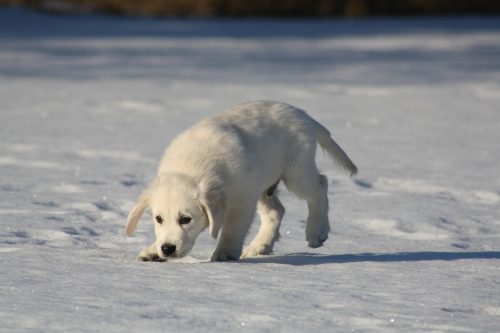
Tips and Tricks for Successful Puppy Training
If you find evidence that your pup went to the bathroom in your home, but you didn’t see him go, it’s not effective to yell or rub his nose in it.
Dogs don’t have the ability to understand that your anger or frustration has to do with the accident on the floor. Don’t punish your pup for going potty in the house, because you will only teach him to be afraid of you.
Instead, use a loud noise such as clapping if you see your puppy eliminating on the floor or if he is about to. Take your pup outside right away, and when he goes in the designated area, reward your buddy profusely, with praise, treats, or both.
You can also try letting your puppy roam outside a little longer than you normally might, simply to help prevent future accidents. He might need that extra time, as sometimes dogs like to explore a bit before they go to the bathroom.
When cleaning up accidents in your home, choose a cleaner that has an enzyme base rather than an ammonia base. This will help minimize odors so that your pup doesn’t keep returning to that same spot.
Stick to a Schedule
Consistency is the name of the game when it comes to house training a pup successfully. Water runs right through dogs, and the same goes for solid food. What goes in comes out quickly, considering pups have such small bladders and intestines.
As a rough guideline, you can realistically expect your dog to hold his bladder based on his monthly age. For instance, a pup that is three months old may be able to hold his bladder for about three hours.
A dog that is six months old could possibly hold his bladder for six hours. However, expecting your dog to hold his bladder for more than ten hours isn’t kind or realistic.
A good rule of thumb if your pup is very young:
- Take your puppy out first thing in the morning, as well as just before bedtime.
- Take your pup out after he plays.
- Take your dog out after he has spent any length of time in his crate.
- Take him out after he has woken up from a nap.
- Take your puppy out 10 to 20 minutes after eating or drinking anything.
- You also may want to take him out after chewing on a bone or a toy.
- If your puppy is under five months old, you made need to also take him out at least once during the night, to prevent him from soiling his bed.
Observing and Watching Your Dog
Learn to observe your pup and get to know him well. Every dog is different, but your dog will always give signals warning you he needs to potty. Those signals could be unique to your pup.
For instance, some dogs tend to urinate when they get overly excited or during playtime.
Some might stop in the middle of playing, run off somewhere to pee, and then run back to continue playing. You will need to carefully watch your pup and learn his personalities and quirks.
Teaching Your Dog Good Habits
- Teach your pup where to do his business by taking him to the spot you want him to go. Just like people, dogs will create habits.
- It’s important to teach your puppy good habits as quickly as possible, because the sooner you can teach him where you want him to go, the sooner he will stop going where he shouldn’t. Remember, consistency is key.
- Take your dog out during the same time every day. Set an alarm on your phone if need be as a reminder, and take your pooch to the same spot for every potty break.
- During the training process, it’s also a good idea to avoid making any renovations or changes in your home, as changes can be confusing for your pet.
- Give your dog positive reinforcement for good behavior when he goes where he is supposed to, and be as over-the-top as you can in your praise. Clap, cheer, give him treats, and let him know how happy you are that he went potty in the place you have taught him. Pups love praise and attention, so doing this helps in understanding that going where he is supposed to go results in a happy human.
Preventing Accidents
Another key to effectively potty training your dog is prevention. One way to help prevent accidents is to monitor your dog’s food intake. Pups can’t handle large amounts of food, so breaking up feedings throughout the day helps your pup to digest it properly.
Also, make sure that whatever food you choose for your dog is high-quality and healthy, and make sure it agrees with his delicate digestive system. If your pup produces stools that are foul-smelling, loose, or bulky, you may need to switch food.
Be careful not to overfeed your pup, as this can lead to diarrhea. If your dog gets a case of the runs, he will not be able to control himself or prevent an accident. If he has recently eaten, you should watch him closely. Most dogs will need to go out not too long after.
Problems That Occur When Potty Training Your Dog
The speed at which a pup will learn to go potty outside can vary from dog to dog, as well as breed to breed. If your dog seems to be having accidents on an abnormally frequent basis, you may need to consult your vet. Frequent accidents could be due to some physical or emotional issue such as anxiety or depression.
If your dog has an overly fearful or excitable personality, this could also lead to frequent accidents. Some dogs could even be suffering from a urinary tract infection, which will make him pee a lot. Also keep in mind that if you own a male dog, he will love to mark his territory. It’s possible your dog’s frequent accidents could be related to that. If that’s the case, you may need to consult a behavior specialist or dog trainer to help you train him to stop.

